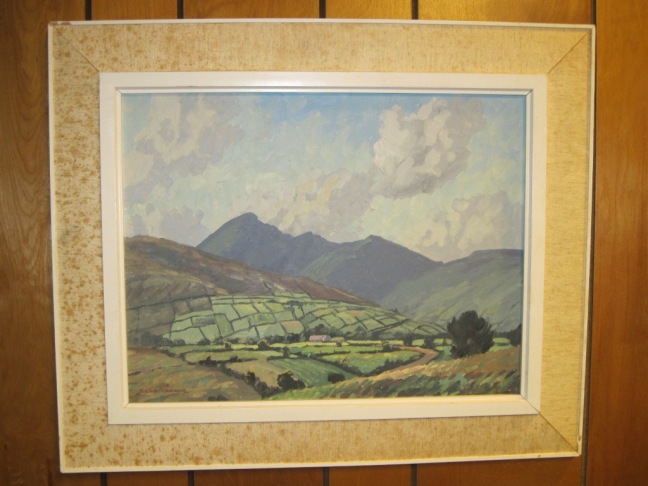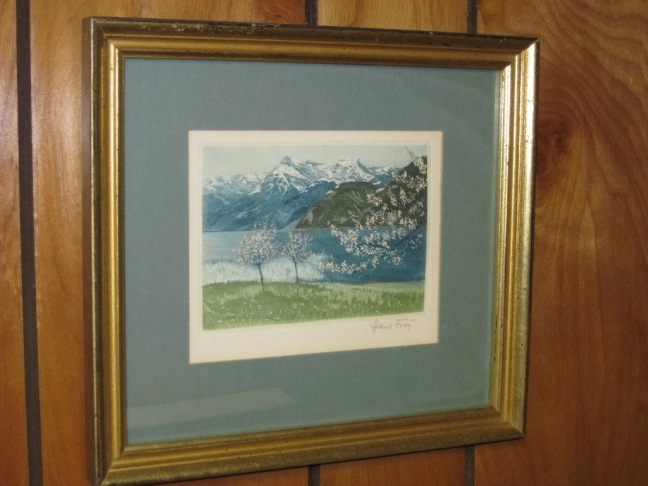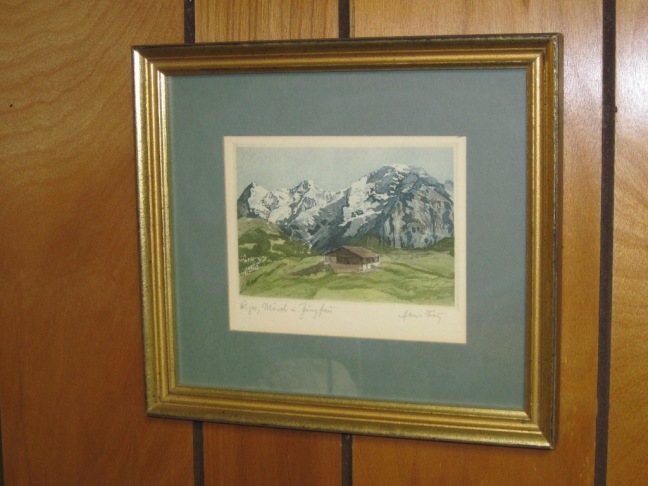Unimpressive up close. The brush strokes are shaky and hurried. Weird choice of tinty colors. Blobs of paint, here and there.

Back up. From the right distance, it’s the real thing. This painting captures a time and place—the emerald isle.
This is an artist that figured out his greens and purples.
Sean O’Connor, 1909-1992, was an Irish artist. He painted landscapes in Ireland with watercolor and oil paint. He was an elected Associate of the Royal Hibernian Academy (ARHA), similar to National Academy of Design in the U.S., and exhibited prolifically at the Royal Hibernian Society and the Water Colour Society of Ireland, according to antiques.com.
The painting is, “Patchwork Fields in Shanara,” says a card scotch-taped to the back.
As far as I can tell, Shanara, Shannara and/or Shanara Cross is a rural area in County Kerry (southwest Ireland.) It is west of Killarney National Park. A lot of O’Connor’s other landscapes are of the Killarney area. Is it possible that this painting shows Ireland’s highest mountain, Carrauntoohil from a distance?
One of the condition flaws of this piece is the frame. I believe it is the original frame, simply because other paintings sold online show the same frame. This one has rusty brown spots on the left side of the cloth liner. Maybe I’ll try to clean it.
This oil painting is on canvas board. It’s labeled Daler Board for Oils, handmade in Wareham, England, Patent No. 634920. It’s in a stock size, 18 x 14 inches. The Daler Board Company was founded in 1946 after Terry Daler returned from a German prison camp. According to Wikipedia, Ken Daler “created a new type of surface for oil painting that pulled the thick oil colour off the brush. Cardboard was sealed and primed through a mesh (a net curtain).” This board looks more like masonite than cardboard.
So that means this painting was made between 1946 and 1992. One of the works with a matching frame is dated 1972.
Many of his paintings are sold. Prices range from $100 to $1471 in U.S. dollars. That makes me happy with paying $6.99 at the thrift store.
If this scene inspires you to visit the land of Eire, I’m sure John and Eileen O’Shea would welcome you to their bed and breakfast, the Farmstead Lodge in the locale of Shanara Cross.


